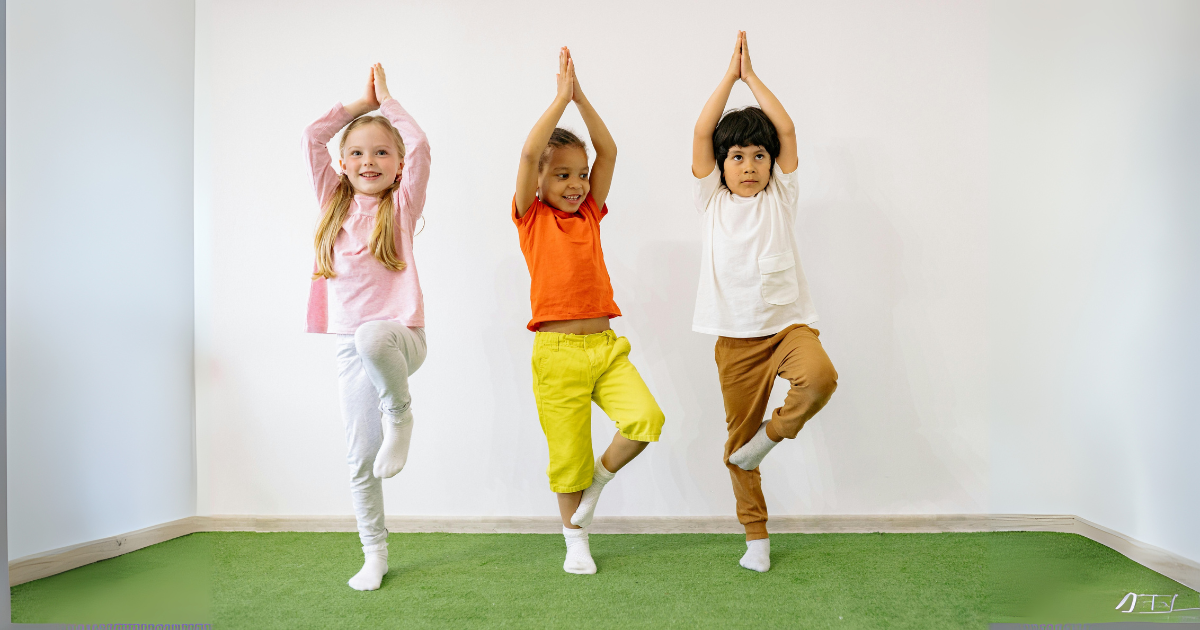Whether at home or in a classroom setting, calm down activities offer a welcome respite from the daily hustle and bustle, allowing children to develop self-awareness, emotional regulation, and mindfulness skills.
Now, we will explore Calming Activities for Preschool Kids that promote relaxation, focus, and well-being.
These calming activities not only nurture a child’s mental and emotional well-being but also equip them with valuable life skills that will serve them well into adulthood.
Mindful Coloring:

Coloring has long been recognized as a calming and therapeutic activity for people of all ages. Encouraging children to engage in mindful coloring can help them focus their attention and relax their minds. Provide them with coloring books or printable mandalas and a variety of coloring materials. As they color, encourage them to pay attention to the strokes, the colors they choose, and the feelings that arise. This activity promotes mindfulness and artistic expression while offering a soothing and meditative experience.
Nature Walk and Scavenger Hunt:
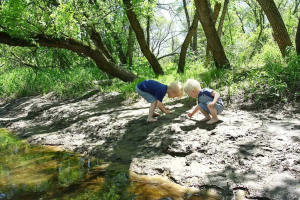
Spending time in nature has a profound calming effect on both adults and children. Take your child for a leisurely walk in a nearby park or nature reserve. Create a simple scavenger hunt list with items found in nature, such as a feather, a smooth rock, or a specific type of leaf. As your child explores their surroundings, they will engage their senses, observe the beauty of nature, and experience a sense of tranquility. Encourage them to take deep breaths, listen to the sounds of nature, and appreciate the peacefulness that surrounds them.
Related: 20 Preschool Activities for Black History Month
Yoga and Stretching:

Yoga and stretching exercises provide an excellent opportunity for children to connect with their bodies and calm their minds. Set up a designated space where your child can comfortably practice a few simple yoga poses or stretch their muscles. You can find kid-friendly yoga tutorials online or use picture cards to guide them through various poses. Encourage deep breathing and remind them to focus on how their bodies feel in each posture. Yoga and stretching not only promote relaxation but also enhance flexibility, balance, and body awareness.
Sensory Bottles:

Sensory bottles are a fantastic tool for promoting calmness and soothing the senses. Fill a clear plastic bottle with water and add items such as glitter, sequins, or small objects that float or sink. Secure the cap tightly. When your child feels overwhelmed or anxious, they can shake the bottle gently and observe the mesmerizing patterns and movement inside. The slow swirling and settling of the contents can help them regulate their breathing, focus their attention, and find a sense of tranquility amidst the swirling emotions.
Guided Imagery and Storytelling:

Guided imagery and storytelling are powerful tools to transport children to a peaceful and imaginative realm. Create a cozy space for storytelling, either indoors or outdoors, and encourage your child to lie down comfortably. Use a soft and soothing tone of voice as you guide them through a calming story or visualization. For example, you might describe a serene beach scene or a tranquil forest setting. Allow their imagination to roam freely as they visualize themselves in these peaceful environments. Guided imagery and storytelling foster relaxation, creativity, and inner peace.
Related: 20 Incredible Zoo Animals Activities for Preschoolers
Breathing Exercises:

Teaching children how to regulate their breathing can have a profound impact on their ability to calm themselves down. Teach them simple breathing exercises such as belly breathing or counting breaths. Encourage them to sit comfortably and take slow, deep breaths in through the nose and out through the mouth. You can make it more engaging by using visual cues like blowing bubbles or pretending to blow out candles. These exercises help children become more aware of their breath and provide a quick and effective way to find inner calm during moments of stress or anxiety.
Sensory Play with Playdough:
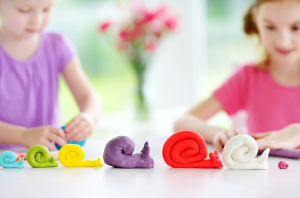
Engaging in sensory play with playdough is not only a fun activity but also a soothing one. Provide your child with different colors of playdough and encourage them to mold and shape it using their hands. The tactile experience of squishing and manipulating the playdough can be incredibly calming. You can also add calming scents like lavender or chamomile to enhance the sensory experience. This activity helps children release tension, improve focus, and express their creativity in a calming and non-verbal way.
Mindful Listening:
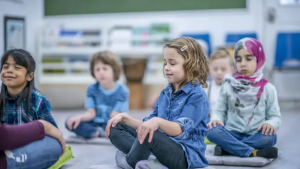
In a world filled with constant noise and distractions, mindful listening allows children to tune in to the present moment and cultivate a sense of calm. Choose a quiet space and guide your child to close their eyes and focus on the sounds around them. Encourage them to identify different sounds, such as birds chirping, leaves rustling, or distant traffic. This activity enhances their auditory perception and helps them develop a greater appreciation for the present moment. It’s a simple yet powerful exercise that cultivates mindfulness and tranquility.
Guided Meditation:

Introduce your child to the practice of guided meditation, which can help them relax, reduce anxiety, and improve their overall well-being. There are many guided meditation resources available online specifically designed for children. Find a guided meditation that resonates with your child, whether it’s focused on visualizations, affirmations, or body scans. Set aside a quiet space where they can sit or lie down comfortably, and play the guided meditation for them to follow along. Guided meditation provides a peaceful and introspective experience that fosters a sense of calm and self-awareness.
Reading and Quiet Time:
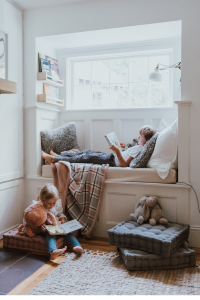
Encourage your child to engage in quiet reading time as a way to wind down and find tranquility. Create a cozy reading nook with pillows and blankets where they can retreat with their favorite books. Reading allows children to escape into different worlds, expand their imagination, and experience a sense of calm. It also helps develop their focus and concentration skills. Encourage them to choose books that have a calming or soothing theme, such as nature, mindfulness, or gentle stories. Reading together or silently, this activity nurtures a love for literature while providing a serene and peaceful atmosphere.
Nature Journaling:
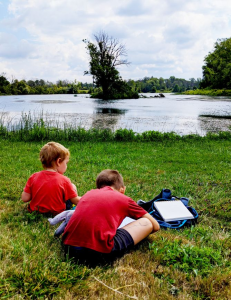
Nature journaling combines the benefits of spending time outdoors with the therapeutic practice of journaling. Take your child to a nearby park, garden, or nature trail and provide them with a journal or notebook, and art supplies. Encourage them to observe the natural surroundings, including plants, animals, and landscapes, and capture their experiences through drawings, descriptions, or reflections. This activity promotes mindfulness, encourages curiosity, and allows children to connect with the beauty and serenity of the natural world.
Calming Music and Sound Exploration:

Music has a remarkable ability to calm and soothe the mind. Create a playlist of soft and gentle instrumental music or nature sounds and invite your child to listen. Encourage them to close their eyes and pay attention to the melodies, rhythms, and textures of the music. You can also provide musical instruments, such as a small handheld drum or a set of chimes, for them to explore and create their own soothing sounds. This activity helps children develop an appreciation for music, promotes relaxation, and allows them to express their emotions through sound.
Guided Nature Walk:

A guided nature walk is an excellent opportunity to combine the benefits of being in nature with mindfulness and self-reflection. Take your child on a walk through a natural setting and act as their guide. Encourage them to focus on their senses—what they see, hear, smell, and feel—as they explore the surroundings. Pause at various points along the way to observe the details of nature, such as the patterns on a tree bark or the movements of a butterfly. This guided nature walk helps children cultivate a deeper connection with the natural world while fostering a sense of peace and harmony within themselves.
Deep Pressure Activities:

Deep-pressure activities provide a calming sensory experience for children. These activities involve applying gentle pressure to the body, which can have a grounding and soothing effect. Examples include using a weighted blanket, having a gentle massage or back rub, or engaging in activities like squeezing stress balls or using a body roller. Deep pressure activities help children regulate their sensory systems, reduce anxiety, and promote relaxation.
Mindful Eating:
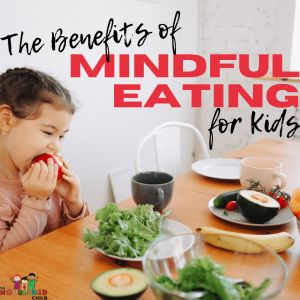
Eating mindfully can be a calming and enjoyable activity for children. Encourage them to slow down, pay attention to their food, and savor each bite. Teach them to notice the flavors, textures, and smells of the food they are eating. Encourage them to chew slowly and be fully present during meals. This practice of mindful eating not only promotes relaxation but also fosters a healthier relationship with food and encourages gratitude for the nourishment it provides.
Lava Lamp Sensory Bottle:

Create a mesmerizing lava lamp sensory bottle to captivate your child’s attention and promote relaxation. Fill a clear plastic bottle with water, leaving some space at the top. Add a few drops of food coloring and glitter, and then fill the rest of the bottle with vegetable oil. Secure the cap tightly and let your child gently tilt and shake the bottle to observe the colorful blobs of oil moving through the water. Watching the floating glitter can be a calming and visually soothing experience that helps children find a sense of calm and focus.
Cloud Watching:

On a clear day, invite your child to lie down on a soft blanket or grass and engage in the peaceful activity of cloud watching. Encourage them to relax and observe the shapes, movements, and colors of the clouds drifting across the sky. Prompt them to imagine the clouds transforming into various objects, animals, or characters. This simple and meditative activity promotes relaxation, encourages imagination, and provides an opportunity for quiet contemplation and reflection.
Quiet Sensory Corner:

Create a dedicated quiet sensory corner in your home or classroom where your child can retreat to when they need a moment of calm. Set up a comfortable seating area with soft cushions, blankets, or a cozy tent. Fill the space with sensory items such as stress balls, textured toys, fidget spinners, or squishy objects. This safe and peaceful space allows children to recharge, regulate their emotions, and find solace during times of overwhelm or overstimulation.
Balloon Breath:

Balloon breath is a breathing technique that engages children in a playful and calming way. Ask your child to imagine their belly as a balloon. Instruct them to take a slow breath in through the nose, feeling their belly expand like a balloon filling with air. Then, have them exhale slowly through the mouth, imagining the balloon deflating. Encourage them to practice this rhythmic breathing technique whenever they feel stressed or anxious. Balloon breath helps children anchor their attention to their breath, promoting relaxation and a sense of grounding.
Aromatherapy with Essential Oils:

Harness the power of aromatherapy to create a calming and soothing environment for your child. Choose essential oils known for their calming properties, such as lavender, chamomile, or bergamot. Dilute a few drops of the oil in a carrier oil or use a diffuser to disperse the scent in the room. The gentle and pleasant aroma can help reduce anxiety, promote relaxation, and create a serene atmosphere. Ensure you use child-safe essential oils and follow proper usage guidelines.

